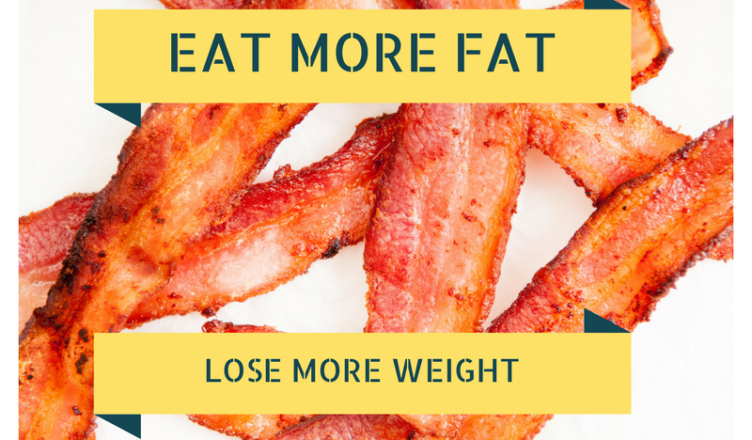It’s called the Ketogenic diet, and I’ve been obsessed with it for the last 8 months…….
What is the Ketogenic diet? Its definitely not a fad diet like many of the others that come and go. This is more of a way of life and a complete change in what you consume. It seems drastic at first, but once you get over the initial hump you’ll never want to go back!
So what is Keto? Ketogenic diets have been around for a long time and were initially used to treat specific medical issues such as Epilepsy. The Keto diet involves eating specific amounts of “macros,” or macro-nutrients which include carbohydrates, proteins, and fats. 60%-75% of your calories must come from fats, 15%-30% from protein, and less then 10% from carbs. Yes, you read that right, 75% of calories from fat. Its not the 90’s anymore where fat was the enemy, studies have shown that healthy fats are are an essential part of a healthy diet particularly if you are eliminating carbs. Essentially, in this diet you are eliminating all non-fibrous starchy carbs, increasing your fat intake, and filling in the rest with protein and low glycemic vegetables (broccoli, kale, zucchini, etc).
-
60-75% of calories from fat (or even more)
-
15-30% of calories from protein, and.
-
5-10% of calories from carbs
What does Ketosis mean, and why does it help me lose weight?
We’re not going to get too scientific here, there are tons of articles and resources which do, such as Ruled.me if you’re looking to take the Keto plunge and want to go deep. But lets touch on the reasons why Keto works, and what happens when you increase fat and decrease carbs. By eliminating sugar and carbs ,which your body converts to glucose for energy, (and stores whatever it doesn’t use as body fat) and increasing fat intake, the body begins to produce ketones in the liver to be used as energy. A successful Keto diet transforms your body from a reliance on energy from carbs (glucose) to instead energy from fats through ketones. Once you’re in a state of ketosis, your body can now function at an elite level fueled by ketones rather then glucose.
Fiber is your friend
While the ketogenic diet avoids carbs, its important to remember how important fiber is to this diet and to your life in general. The health benefits of dietary fiber are well documented and include normalization of bowel movements, lowering of cholesterol levels, regulation of blood sugar and many others. But in terms of the Keto diet, its very important to only calculate net carbs, or digestible carbs. Fiber is not digestible and instead acts as somewhat of a brush helping to move things along in your gastrointestinal track and ultimately aiding in the reduction of cancer causing free radicals, among other things. Fiber also fills your belly for a long time, which helps when you are eliminating carbs and are on a strict diet. For this reason, I personally eat between 1-3 cups of broccoli per day!
When looking at a label to identify how many carbs a food item may have, you should deduct any dietary fiber from that number as these will not be digested, they will simply pass through. There are many new products now available in the health food vertical which have enormous amounts of dietary fiber allowing dieters to enjoy foods with a similar texture to starchy carb products, but without the carb hit such as Halo Top ice cream, Quest bars, Mission Carb Balance tortillas (with a whopping 13 grams of dietary fiber!!). Lets use Mission Carb Balance tortillas as an example: at first glance the label says 19 carbs which is when I would typically run for the hills. After further inspection, you will notice that there are 13 grams of dietary fiber which is part of that 19 carbs. After deducting the 13 grams, you’re left with 6 grams of digestible carbs for the tortilla which I can certainly work into my Keto diet. And they taste great and give me the feeling that I just ate a burrito!
Other benefits
Since the diet is focused on fats, the upside is you get to eat a ton of rich and satisfying foods like bacon and butter. Initially I went a little crazy with the red meat, bacon, butter, etc. Whole eggs cooked in butter, goose fat cooked vegetables, steak, and pork rinds and cheese sticks for snacks are all staples for me. As I progressed and my body required less calories and had less cravings I began to reduce some of the animals fats and increase plant based fats like avocado, coconut, hemp, chia, MCT oil (medium chain triglyceride). These fats make you feel great and focus; this is brain food!
Some negatives
While this is a life change for most in a good way, there are definitely some downsides to be aware of. For starters, expect to have some gastro discomfort initially until your body gets used to the adjustment, this took me about a week or so. If you are using MCT oil or other efficient modes of fat intake, you are going to want to scale that up slowly. Maybe start with a half teaspoon of oil in your morning shake and then slowly work up to a tablespoon to avoid feeling like you are walking around with a brick in your stomach. Eventually, you will be a fat burning machine and your body will be primed to take on large amounts of fat with no discomfort.
Initially, transitioning your body to a minimal carb diet will be a bit uncomfortable. The “Keto flu,” as some call it, usually lasts for 3-4 days during your initial transition and the symptoms are what you would expect after eliminating almost all of your carb intake – lightheaded, tired, dizzy, irritable, lack of concentration. Keep in mind, this is only temporary, and once your body starts producing ketones all these symptoms will disappear. To combat those initial few days of the Keto flu, make sure you stay hydrated, eat plenty of fat, and increase your salt, magnesium, and electrolytes in general. I highly recommend having chicken stock on hand, which is loaded with salt and magnesium and has proven to be a savior in breaking up those 4:00 pm irritable dizzy spells.
Bad breath, yea, your breath may be a bit more stinky then when you eat carbs, its been a very minimal side effect for me, and its very manageable once you hunt down the specific source.
Hangovers are definitely much worse then on a traditional starchy diet, I hear this often when talking to others on a Keto or low carb diet, and I can personally attest to this. Constipation can be a problem, but really you should be eating massive amounts of dietary fiber on a Keto diet to fill in around all of that fat, so I find this to not be an issue as long as i’m eating 2-3 servings of fibrous vegetables with each meal. Others will recommend fiber pills like Metamucil which I found to be really helpful during the first few weeks, but which I soon found I could replace with fresh sources of fiber which come along with tons of nutrients as well.
That all sounds interesting, now what? If you have gotten this far, you are probably pretty confused as to how to get started. I found myself reading blogs for about 3 weeks before actually diving in, and I would recommend the same. If my article was the amuse-bouche of your entrance into this fascinating way of eating, then let these guys be your actual beginners guide. I’m leaving out a ton of things, but the idea of for this article is to spark your interest, and from there the amount of information online about Ketogenic diets is endless, and to be honest, not 100% all on the same page, so do your research!
Before I give you a sample day’s menu from my arsenal, please keep in mind that I am on a modified Ketogenic diet where I eat about 40% protein, 55% fat, 5% carbs. Many hardcore Keto people will yell, scream, and tell me that I’m not truly on a Ketogenic diet because I’m eating too much protein and not enough fat. With that said, there are tons of modifications, and really smart people who utilize what fits their lifestyle best and are not married to a traditional Ketogenic diet. Others prefer Cyclical Ketogenic diets for example, where they cycle more carbs over the weekend and then adhere to a traditional Keto diet during the week, this is quite popular for hardcore bodybuilders or people looking to lift serious weight in the gym and feel they need that muscle glycogen refill to have meaningful workouts (I personally don’t subscribe to this, and find that I can crush serious weights with empty glycogen stores and find that I feel best with as few carbs as possible). Still others will include more carbs directly after their workout or directly before their workouts and then restrict carbs the rest of the day. With that said, there is no one right diet here, yes, traditional Ketogenic diets should have closer to 70% fat, but for some that is just not a realistic way of life, so we modify. In my humble opinion and playing with what works best for me, by limiting sugars/carbs and increasing healthy fats I see a tremendous change in how I look and feel.
Give it a try and let us know how it’s going by commenting below. Good luck! Oh, and don’t forget bacon, that’s a staple on this diet!
Coffee – 6:30 am – Pre-workout Coffee – +1 Tbsp organic grass fed butter (or ghee), 1 tsp half & halfSnack – 8:45 am – Post-workout shake – 1 scoop Isopure natural, 8 oz almond milk, 1 scoop greens powder, 1 tablespoon MCT oilBreakfast – 11:00 am – 3/4 cup steamed broccoli, 1 duck egg (the yolk is huge, so, more fat), 2 oz feta cheese, Tbsp sour cream, TabascoLunch – 1:30 pm – Salad with tons of veggies, 8-10 oz chicken breast, steak, or salmon, olive oil based dressing, 1 avocadoSnack – Handful of macadamia nuts or walnuts, 1 cheese stick. If you tired, add powdered greens blended with almond milk (add some heavy cream for fat if needed).Dinner– 8-10 oz Steak, Chicken, or Salmon grilled, sauteed, or roasted, with roasted broccoli or zucchini, and kale salad with ranch dressing and fresh mozzarella cheese.Snack – 1/4 cup Halo Top ice cream with walnut butter and hemp hearts on top (tastes better then it sounds).



